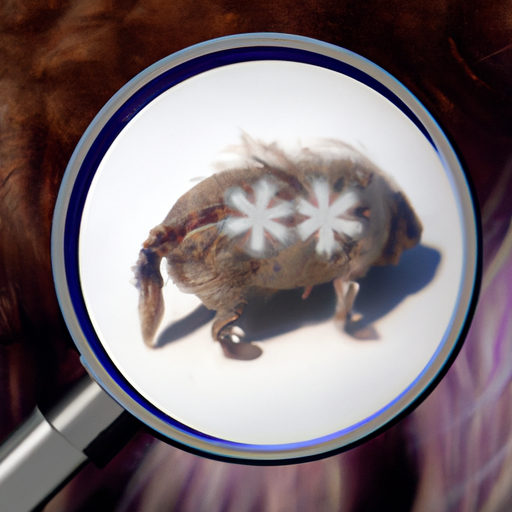As a pet owner, your four-legged friend’s health is of paramount importance to you and understanding the causes of common diseases can help you protect them. Among these diseases, Lyme disease is a common tick-borne illness that can affect dogs, resulting in severe symptoms if left untreated.
Table of Contents
- Understanding Lyme Disease in Dogs
- Causes of Lyme Disease in Dogs
- Symptoms of Lyme Disease in Dogs
- Diagnosis and Treatment of Lyme Disease
- Prevention and Control Measures
- Frequently Asked Questions
Key Takeaways
- Lyme disease in dogs is caused by the bacterium Borrelia burgdorferi, transmitted through the bite of infected black-legged ticks.
- Recognizing the symptoms of Lyme disease is crucial for early treatment and recovery.
- Preventative measures, including tick control and vaccination, can help protect your dog from Lyme disease.
Understanding Lyme Disease in Dogs
Lyme disease, also known as Lyme borreliosis, is an infectious disease caused by the bacterium Borrelia burgdorferi. This bacteria is transmitted to dogs through the bite of infected black-legged ticks, also known as deer ticks. The American Kennel Club provides a comprehensive guide on Lyme disease, shedding light on its prevalence in the United States, especially in the Northeast, upper Midwest, and Pacific Coast.
According to One Top Dog, Lyme disease is one of the most common tick-transmitted diseases in the world, but not all dogs who test positive will show symptoms. The disease can cause serious health problems if left untreated, so it’s vital to understand what causes Lyme disease in dogs, what symptoms to look out for, and how to prevent it.
Causes of Lyme Disease in Dogs
Lyme disease is primarily caused by the bacterium Borrelia burgdorferi. This bacterium is carried by infected black-legged ticks, which transmit the bacteria to dogs when they bite. These ticks become infected by feeding on infected deer, birds, and mice.
Here’s a brief overview of how Lyme disease is transmitted:
- The tick feeds on an infected host: Ticks feed on blood, and they can pick up the bacteria when they feed on an infected host, such as a mouse or bird.
- The tick bites a dog: If the tick later feeds on a dog, it can transmit the bacteria to the dog, causing infection.
It’s important to note that the tick must be attached to the dog for approximately 48 hours to transmit the bacteria. This gives you a window of opportunity to find and remove the tick before it can infect your dog.
Symptoms of Lyme Disease in Dogs
Lyme disease can cause various symptoms in dogs, which may not appear until several months after the tick bite. According to the pet health section of One Top Dog, common symptoms include:
- Fever
- Loss of appetite
- Reduced energy
- Lameness (can be shifting, intermittent, and recur)
- Swelling and pain in joints
In severe cases, dogs may also develop kidney problems, heart or nervous system disease.
Diagnosis and Treatment of Lyme Disease
If your dog is showing symptoms of Lyme disease, it’s crucial to take them to the vet for a diagnosis. The vet will perform a physical examination and may also conduct blood tests to confirm the presence of Borrelia burgdorferi bacteria.
Once diagnosed, Lyme disease can be treated with a course of antibiotics. Most dogs respond well to treatment, but some may continue to have long-term joint pain.
Prevention and Control Measures
The best way to protect your dog from Lyme disease is through prevention. Here are some measures you can take:
- Use tick control products: There are many products available that repel or kill ticks, including spot-on treatments, oral medications, and collars.
- Check your dog for ticks daily: This is especially important if you live in an area where Lyme disease is common.
- Keep your yard tick-free: Regularly mow your lawn, remove tall grass and leaf litter, and keep shrubs trimmed.
- Consider a Lyme disease vaccine: Talk to your vet about whether a Lyme disease vaccine is right for your dog.
One Top Dog provides detailed information on various dog vaccines, including those for Lyme disease.
Frequently Asked Questions
1. Can Lyme disease in dogs be cured?
Yes, Lyme disease in dogs can usually be cured with antibiotics. However, some dogs may continue to have joint pain even after treatment.
2. Can humans catch Lyme disease from dogs?
While humans can get Lyme disease, they cannot catch it directly from their dogs. The disease is transmitted through the bite of an infected tick.
3. Can a dog be tested for Lyme disease?
Yes, a vet can conduct a blood test to check for Lyme disease in dogs.
In conclusion, Lyme disease is a serious condition that can affect your dog’s health. However, by understanding the causes, recognizing the symptoms, and taking preventative measures, you can protect your furry friend from this disease.



